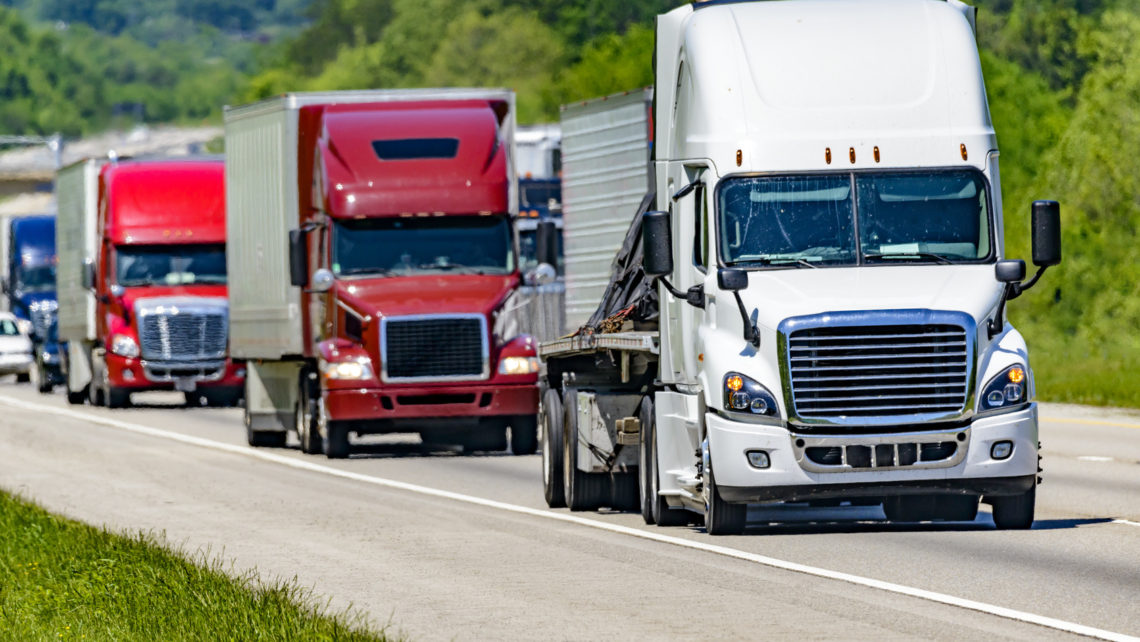The modern trucking industry began with the advent of the motor vehicle and paved roads. Heavy duty trucks were first used during WWI to transport everything from soldiers to ammunition. Prior to WWI, most freight was transported by rail or in a horse-drawn carriage. The trucking industry grew in prominence as Interstate Highways linked major cities throughout the country and by the 1960’s, trucking had secured its dominance in the freight industry. Advances in technology such as GPS, (Global Positioning Satellite) WIFI, (Wireless Fidelity) and automatic transmission has helped the trucking industry secure its dominance in the freight industry.
Each year, over 10 billion tons of freight gets transported throughout the United States. It takes over 3.6 million trucks and over 3 million drivers to move all of that freight. Without the trucking industry, America’s economy would come to a stand still.
A large portion of the freight shipped each year is composed of raw materials; the essential part of everything produced and manufactured in the United States. It requires that these raw materials reach their destination timely so that production can go on as scheduled, and that they also reach their destination at the most economical price possible.
Finished goods are also a major component of the trucking industry. They transport everything from fruits and vegetables to cars and electronics. Without these trucks and the drivers operating them and transporting these loads, the US economy would come to a stand still. The trucking industry is the lifeblood of the US economy
Types of Freight
When it comes to trucking, there are four types of freight. Less than truckload (LTL) is the most common, inexpensive, reliable and timely service because the freight contains goods from several suppliers. The freight arrives at a distribution center where some products arrive at their designated location and some continue to another destination while others are loaded onto a different truck and taken to another destination/ distribution center.
A Partial truckload involves a dedicated truck that moves fewer loads at one time. It usually involves materials that has to be temperature controlled or contains hazardous materials.
A Truckload is exactly what is sounds like. It is an entire truck dedicated to shipping its entire cargo to one destination. It is not the most economical but it is much faster that LTL because it requires no truck transfer or loading and unloading of your shipment.
Air ride (Full or partial) provides a delicate ride if your shipment is delicate or has a high risk of damage. It is usually the most expensive (based on weight) because it is one load,
Of course there are other methods of transporting goods; ships, planes, trains, but more than seventy percent of all US goods are transported by trucks. Even in the case of ships and trains, they cannot deliver them directly to a distribution or retail center. The final leg of the journey is typically made by truck.
Coordinating all the items being shipped across a network of highways, suppliers and outlets takes a remarkable amount of planning and logistics. This is where “the rubber meets the road” in making trucking a viable method of transporting and delivering goods. Without this, trucks go idle, goods are not transported efficiently and prices go up. Logistics has become the most important part of any worldwide logistics company among top US transportation companies.
US Trucking Firms
More than ninety percent of the truckers in the United States are Owner-Operators. Advances in technology mentioned earlier have made this transition possible. However, there are still challenges in starting your own trucking service. Purchasing and insuring a truck is the biggest hurdle. Then there is obstacle of breaking into the industry. Dispatchers have drivers that they have built a rapport with and can trust to figure out problems with no intervention. This makes their job easier rather than trying to deal with a driver who needs constant supervision. There is also the reality of being constantly on the road and in unfamiliar surroundings. This leads to the added problem of self medicating and harmful behavior.
Despite all of this, freight, in terms of raw tonnage, and trucking, as a percentage of transporting goods, continues to increase. Thus the demand in trucks and truck drivers continue to climb.
